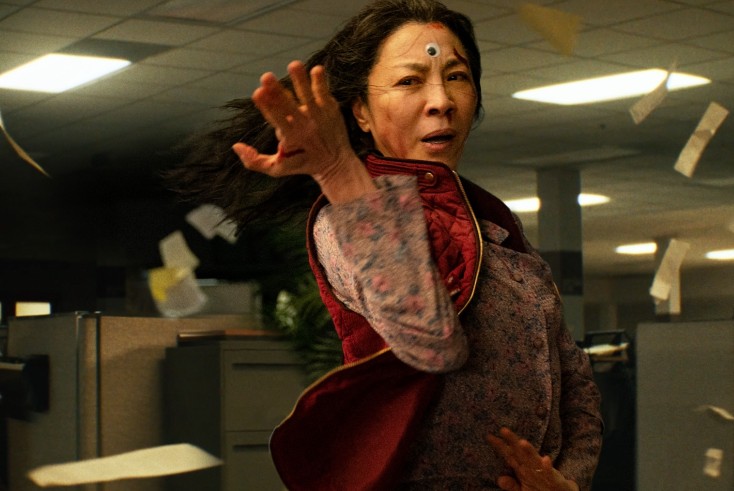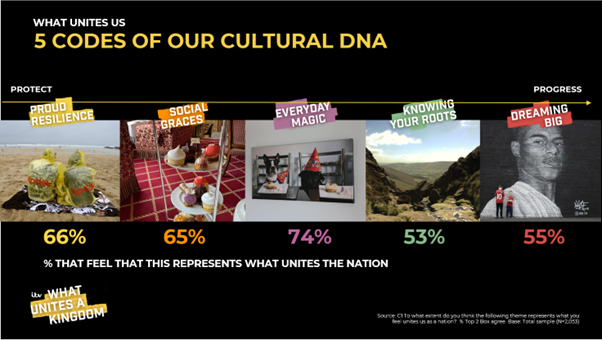Do you have a googly eyes strategy?

Opinion: Strategy Leaders
Strategist Simon Carr looks at the changing pace of cultural exchange, and how this might impact the creation of new and unique ideas
A strange trend that was first brought to my attention more than a decade ago has now become pervasive. I suspect many readers will have spotted it too.
Pop culture’s vast treasure trove — historical, geographic, political and intellectual — is being pillaged. Toyed with to the extent it would appear that, just like one of 2022’s most interesting films, we’re doing everything, everywhere, all at once.
That film itself is a “swirl of genre anarchy” with elements of surreal comedy, science fiction, fantasy, martial arts and animation. It features an actor from cult ‘80s film The Goonies and is soundtracked by Andre 3000. It stands as an apt representation of the state of contemporary culture.
Pop culture trends used to develop over a decade or more; enough time for things to blaze into fashion and hit the mainstream before fading out until revived by a new generation.
Nowadays, trends are tripping over themselves. How else did we reach a year in which pop punk, cowboy boots, sweatpants, diamanté jewellery, Regency-inspired outfits and drill music coexisted?
So, how did we reach this mass cultural pollinisation?
We’re seeing the effects of people having unfettered (internet) access to decades’ worth of cultural information, but often without much context. More recently this has been made all the more potent by the rise in recommendation algorithms and social video platforms.
Digital technology has thus been able to bring (sometimes surprising) pop cultural moments to fresh audiences. While this helps to preserve and celebrate local, niche or short-lived cultures, the risk of endless recycling and sharing is the potential for a general homogenisation of global culture.
This impacts all of us whose job it is to understand, access, leverage — and indeed create — culture.
The pace of change
I recently met with ITV as they wanted to share their research, produced with cultural consultancy Crowd DNA, which uncovers the “evolving codes and customs” of modern ‘Britishness’. It identifies the “eccentricities” that bind our nation, in spite of the increasing complexity of UK culture.
The findings, which are available here and outlined in the image below, are interesting as they show there are still deep cultural codes which connect us. However, in contrast to what is happening to other aspects of our culture, they are shifting slowly. This suggests there are some less superficial characteristics of the human experience that have rigid roots.

This is an important consideration for strategists, and builds on ideas first articulated by the American writer Stewart Brand in his 1999 work on ‘pace layering’. In the context of culture, this suggests different rates of change occur. Some elements change quickly to respond to new information or developments, others more slowly, preserving stability and continuity. This allows for cultural practice to evolve over time, but still maintain its core values and principles.
It certainly helps us today as we try to understand, as professional communicators, what will resonate with a broad array of people.
Stagnation and nostalgia
There is another challenge cultural observers should pay attention to: the argument that rich societies that fail to create much new culture are stagnating; running out of fresh ideas in their apparent decadence and reliance on gadgetry.
This contention was put forward by Kurt Andersen in a 2011 essay for Vanity Fair, the author states that cultural evolution seemed to stall in the early 1990s.
“The recent past—the ‘00s, the ‘90s, even a lot of the ‘80s—looks almost identical to the present,” Andersen suggests, labelling this the “First Great Paradox of Contemporary Cultural History.”
More recently, American political analyst and author of The Decadent Society, Ross Douthat, builds on this thinking with compelling evidence that “secular stagnation” and “cultural nostalgia” in Western societies is limiting our ability to create new ideas.
In particular, Douthat notes technology has failed to empower people in the way it was hoped, which doesn’t bode well for generative AI. Certainly, internet technologies and algorithms may only serve to sustain mediocrity.
The result? At the Most Contagious conference at the end of last year, editorial director, Alex Jenkins, provocatively proposed that there was “a nearly complete lack of visually iconic work” in 2022.
A way forward
It would be easy to be drawn into this fatalism, but I still believe that there are some clear opportunities for advertisers to effectively tap into our (fast) changing cultural landscape:
Mass & Fragmented
Focus on those deep-rooted and enduring themes and values that transcend cultural boundaries, as highlighted by the ITV research. Campaigns that address common experiences, aspirations, and desires can bypass the ephemeral cultural landscape.
Alternatively, advertisers could lean into the cultural soup. This could mean focusing more closely on fandom and adopting Bodacious founder Zoe Scaman’s formula around community, autonomy and equity to relinquish control to micro-cultures. For some brands, becoming famous across many different fragments could be the route to success — as my colleague Lysette Jones wrote recently.
Serendipity & Algorithms
If algorithms breed mediocrity, then we must find ways to operate with them differently. How can we add more surprise and joy to the user experience? How can we escape blanding?
To become more Yayoi Kusama, you must identify your brand’s equivalent of the googly eyes?
This isn’t to say there isn’t a place for algorithms within your performance marketing, but advertisers need to find a better balance across data strategies that reflects the changing speeds of culture.
West & East
Finally, we might benefit from learning to expand our tastes beyond Western culture.
There are exciting and original ideas emerging from Africa, India, South Korea and China that reflect a new world of opportunity; Squid Game, Afrobeats, Imma Babymonster.
Indeed, perhaps we need to dissolve this notion of East and West and advertisers should consider how a more diffuse global culture can be better incorporated into marketing.

Simon Carr is chief strategy officer at Omnicom Group media agency Hearts & Science.
Strategy Leaders: The Media Leader‘s weekly bulletin with thought leadership, news and analysis dedicated to excellence in commercial media strategy.
Sign up for free to ensure you stay up to date every Thursday.




